These not-so-obvious indicators will make your home a target for thieves.
20 Common Home Security Mistakes

Posting Pictures of Your Keys Online
It’s a common photo-op for new homeowners. Post a picture of you with your new set of keys in front of your new home. This practice is also popular among thieves. There are apps and computer programs that can zero in on a picture of a key and easily replicate it. This puts your home at risk. What’s more, all a would-be thief needs to do is upload that information to a key-cutting service, and they can order a duplicate key to your home’s door lock.
No one expects to be robbed, but it certainly doesn’t hurt to be prepared. Your home is full of secret hiding spots for valuables that thieves will never see.

Leaving Trash Visible in Garbage Cans
Setting out the box from your new 60-inch HDTV or high-end gaming console on the curb is basically advertising the fact that those items are in your home. As electronics are the second thing burglars go for (cash is number one), this makes your home an attractive target.
One way to keep homes safe from burglars is to buy a cheap box cutter and invest the 30 seconds it takes to break down large boxes and bundle them together so their labels can’t be seen. Plus, your garbage man will thank you!

Sometimes Just Living on Your Street
Homes in high-visibility places are far less likely to be broken into—there are simply too many potential ways to be seen. But townhomes, houses in the middle of the block, or houses in a cul-de-sac are much better targets. This is especially true if your property backs up to a forest, open lot, or other unguarded area.
The trick is to make your house as difficult as possible to access. This means installing high fences and lots of lighting. But if you’re planning a trip and will be away for a while, try these ways to prevent garage break-ins or fool-proof methods to trick burglars into thinking you’re at home.

Having a Wide Open Backyard
A backyard without a fence or one that opens up to a wooded area is prime for burglars to target. It’s relatively easy to move in and out of, plus the woods will make an escape easier.
There’s a lot to like about privacy fencing for such situations, according to contractor Luke Beerman: “Privacy fences not only enhance your home’s aesthetic but also offer significant security advantages. By blocking sight lines, they deter intruders, reduce theft risks, and create a safe space for children and pets.”

Using a Window A/C Unit
Window units are great at cooling smaller spaces but they’re also easy for thieves to knock out of the way and grab any loot inside a home.
If you’re going to use window air conditioners, and you’re worried about security, place them in windows too high to access from the ground.

Forgetting to Keep Up Appearances
If you normally leave your blinds or drapes open during the day, and then you close them the day you leave for vacation, that could be a sure sign for burglars that no one is home.
“I recommend a mix of open, partially open, and close,” says home security expert Emily Long. “Open blinds that provide full views of TVs, computers, and other valuables can tempt burglars, while partially open blinds provide privacy and security as well as let interior light out, giving the illusion that you are home.”
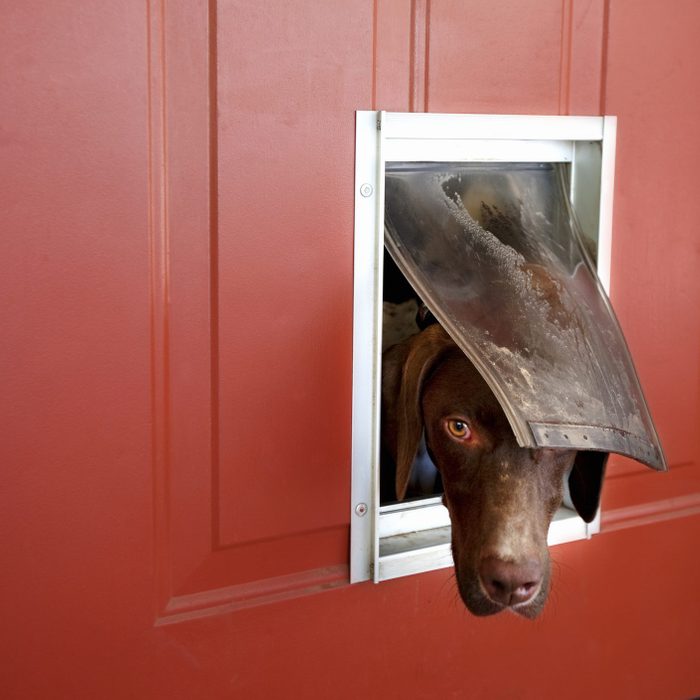
Leaving an Opening Through the Dog Door
When burglars can’t get in through human entrances to your house, they may try to get in through the animal entrances. Robert Sollars, security expert and creator of robertsollars.com, knows this all too well: “There are innumerable instances of doors being secured but the burglar coming in through the kitty door,” he advises. “Not all burglars are 6-foot-2 and 200 pounds. They can slither through those openings as well as a snake.”

Leaving Fresh Snow
If it snows while you’re out of town, get a neighbor to create car and foot tracks into the house. Virgin drifts in the driveway are a dead giveaway.

Having Glass Doors
If decorative glass is part of your front entrance, don’t let your alarm company install the control pad where a burglar can see whether or not it has been set. That makes it too easy. Glass doors can potentially hike your energy costs, too.

Leaving Your Blinds Open
Burglars love looking in your windows. They’re looking for signs that you’re home or you have gaming systems they’d like. Burglars will drive or walk through your neighborhood at night, before you close the blinds, just to pick their targets, so close them early to avoid being seen.

Failing to Secure Patio Doors
Patio door locks are easy to pick. Placing a heavy-duty stick in the door track will bar the door closed, but it looks crude and it’s inconvenient to remove every time you want to open the door. Fortunately, there’s a better way to get the security you need.
Andersen Corp.’s auxiliary foot lock fastens along the bottom of the door and has a bolt that fits into a grommet to hold the door secure. A similar lock, the Door Guardian attaches at the top of the door. Both locks allow the door to open three inches without compromising security, and installation takes about 10 minutes.
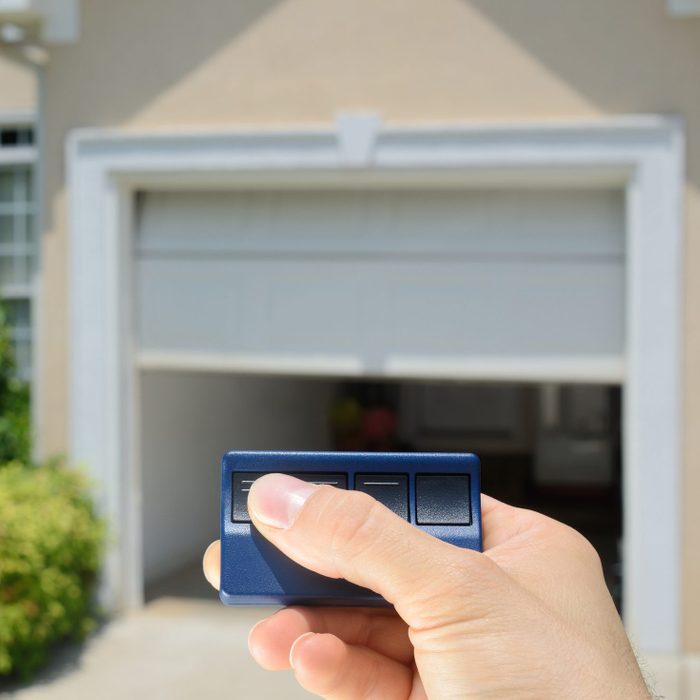
Keeping the Clicker in the Car
A thief who breaks into your car can grab the remote for easy access to your garage. This isn’t just a problem when your car is parked in the driveway; the registration card in your glove box gives a crook your address.
Get rid of the remote on your visor and buy a keychain remote. You can easily take it with you every time you leave the car. Home centers stock only a small selection of remotes, but you’ll find more online. Start your search by typing in the brand of your opener, followed by “remote.”

Letting Flowers Wilt While You’re Away
While your friends and neighbors can pick up the mail, grab the paper, create tracks in the snow, etc., your flowers might get overlooked. A thief in the area will wise up to what’s going on when they spot a few wilted flowers. Remove the flowers before you leave or have a neighbor you trust come in and maintain them while you’re away.

Not Mowing the Lawn
If you have someone routinely mow your lawn, you don’t have to worry about it overgrowing while you’re on vacation, but if you think you can skip the mowing and let the lawn grow, think again. Thieves will notice just as quickly as your neighbors what an eyesore your lawn has become.
The neighbors might talk about it with each other, but a thief will use it as an excuse to check on the rest of your house.
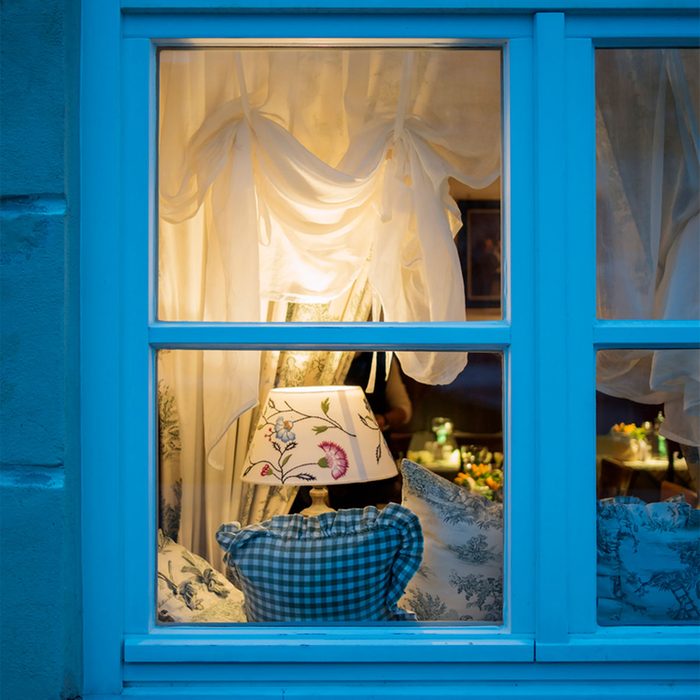
Leaving the House Dim
Some people want to leave a dim light on while they’re away on vacation as a deterrent to break-ins. There’s a debate whether it’s better to leave lights on or off, but one thing’s for sure: Those dim lights at night are going to be dim during the day, and any smart burglar will notice that.

Leaving a Radio On
Just like with leaving the lights dimmed, leaving a radio on or even on a timer isn’t going to deter a thief. It might even attract them if the radio plays non-stop. Many thieves still knock on the door to make sure no one is home before they enter a house.
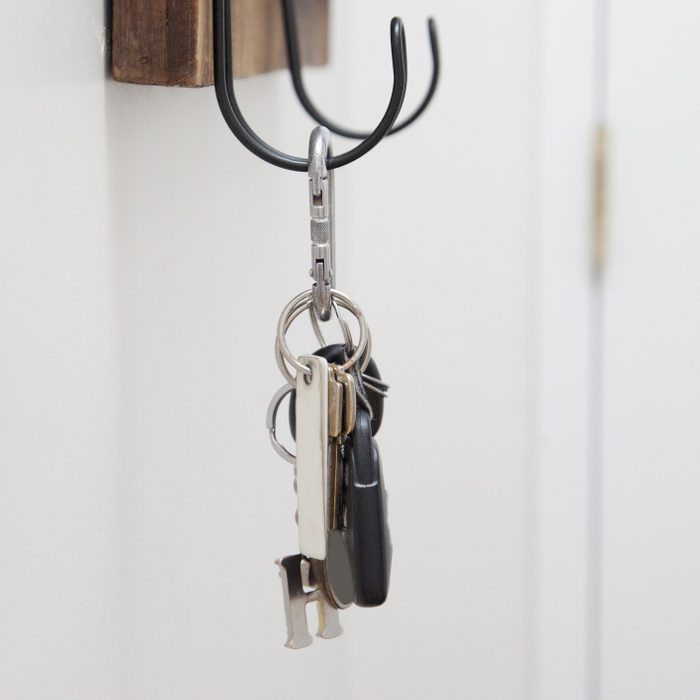
Keeping Keys on a Hook Next to the Door
Keys in close of proximity to a door or window is a terrible idea. They’re easy to find, and they will give a burglar access to all sorts of goodies—in addition to what’s in the house.

Having Neighbors and Neighbors’ Friends Over
Word can get out quickly who’s got what in a house, and that information can potentially reach a burglar looking for some quick cash.
If you like to have people over to watch big games, here are some great tips for organizing your home so you can fit everyone in comfortably.

Posting Obituaries in the Paper
A Reddit user mentioned that their deceased grandfather’s home got burglarized the day of the grandfather’s funeral. Given this, it’s a good idea to have someone keep an eye on the house while you mourn.
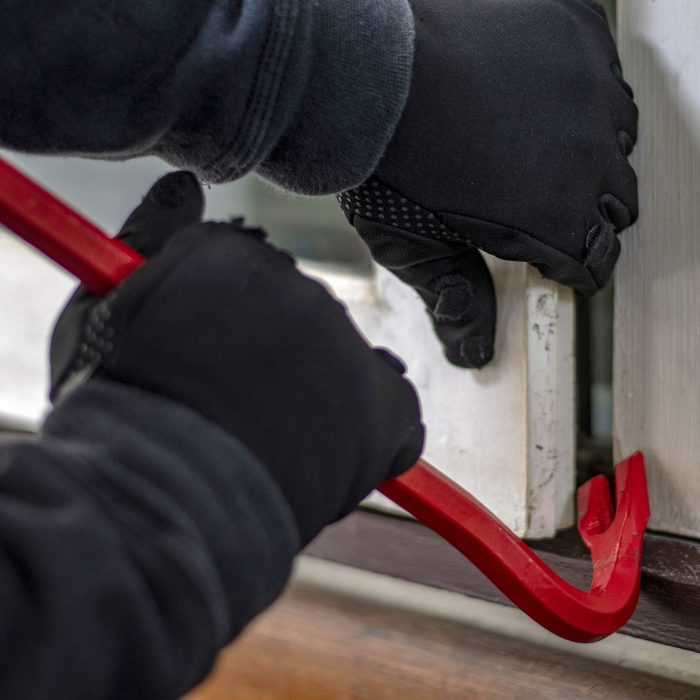
Not Doing Anything After a Burglary in the Area
Burglars often return to the same area after the initial burglary. Stay aware of what activity is happening in your neighborhood.
About the Experts
- Luke Beerman is the CEO of Freedom Fence FL, a fence installation company servicing several counties in Florida.
- Emily Long is a safety expert at SafeWise.
- Robert D. Sollars is a recognized expert on security issues who publishes blogs at Thinkcurity.
Sources
- The New York Post: 40% of Americans pretend to be travel influencers on vacation, new survey says; (2024)
- StaySafe.org: Home Security 101: Preventing Break-Ins; (2025)




















